BUNYIP RAILWAY SUB STATION
NAR NAR GOON-LONGWARRY ROAD BUNYIP, CARDINIA SHIRE
-
Add to tour
You must log in to do that.
-
Share
-
Shortlist place
You must log in to do that.
- Download report
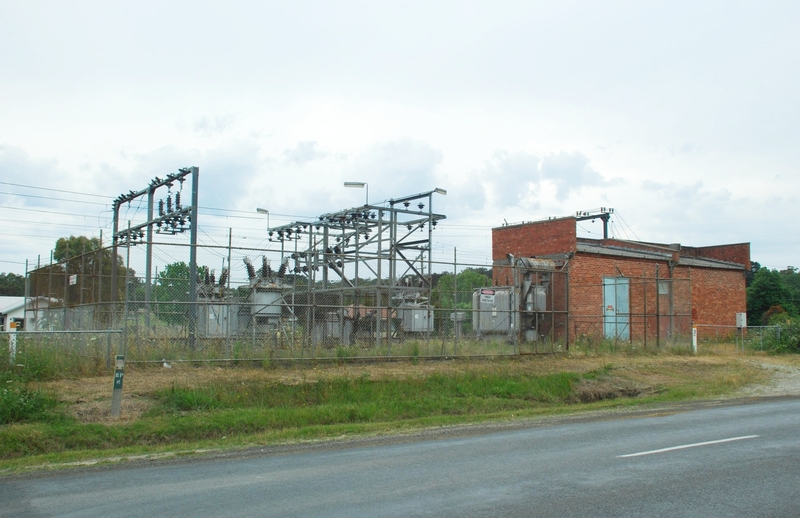

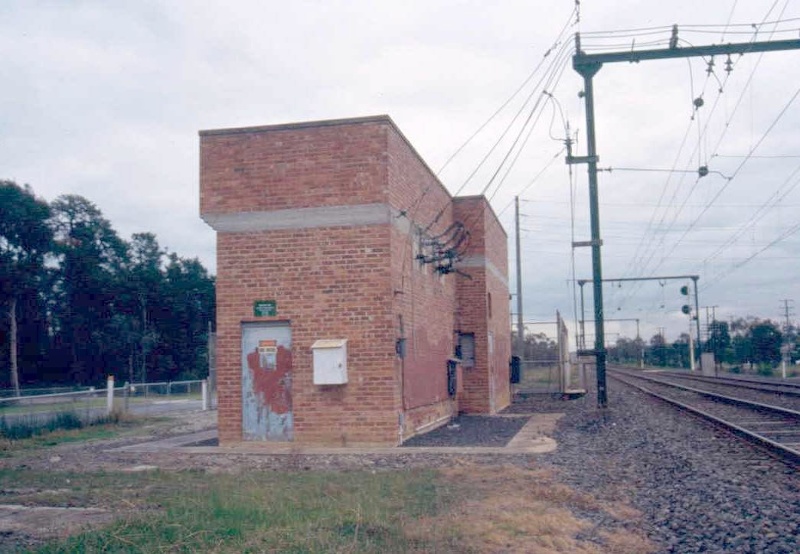
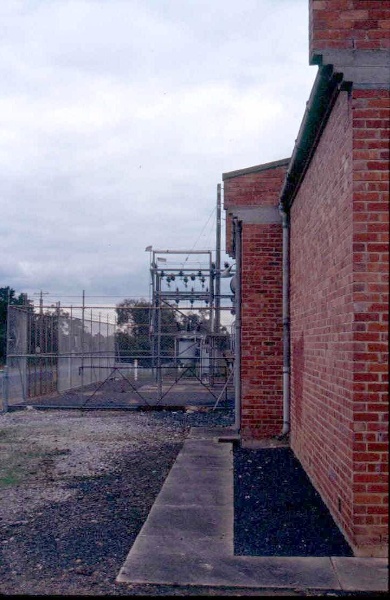
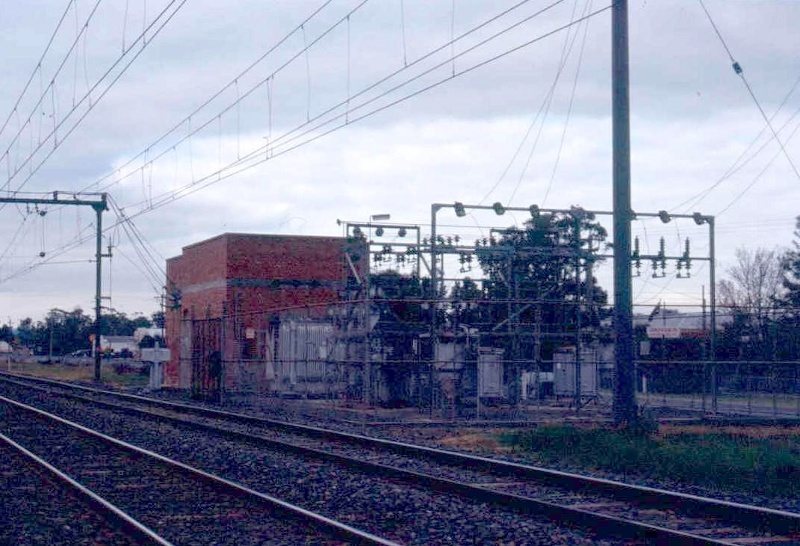
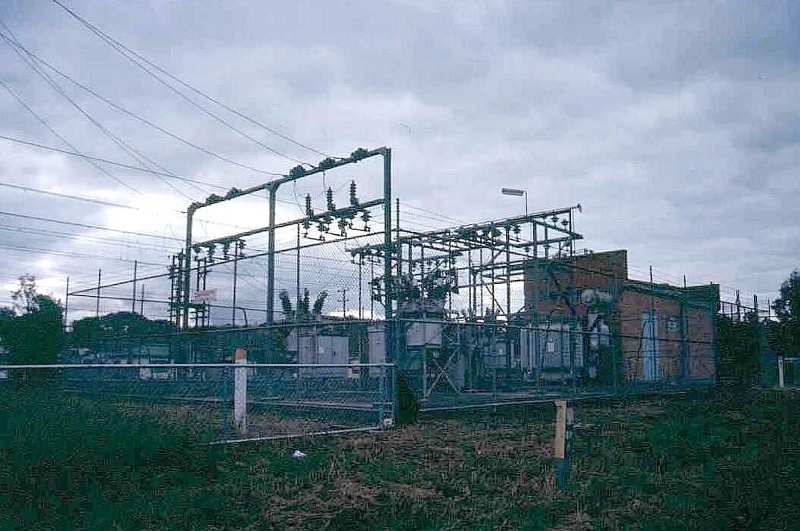
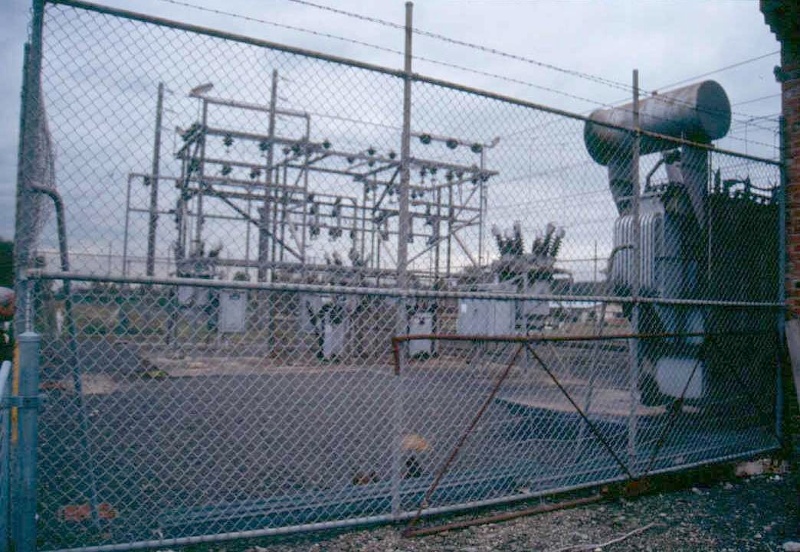
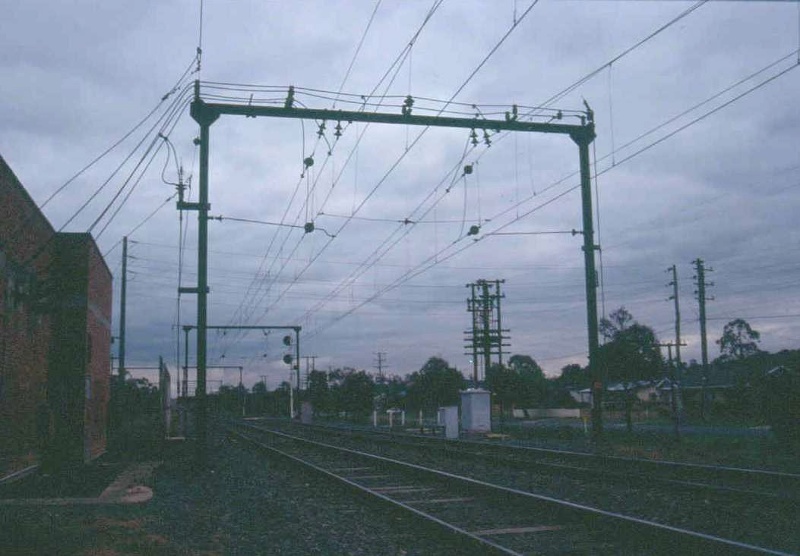
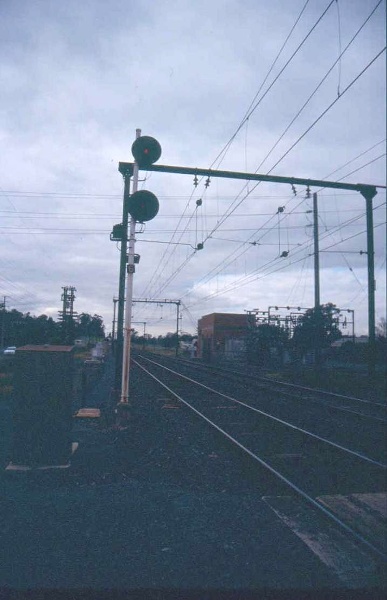
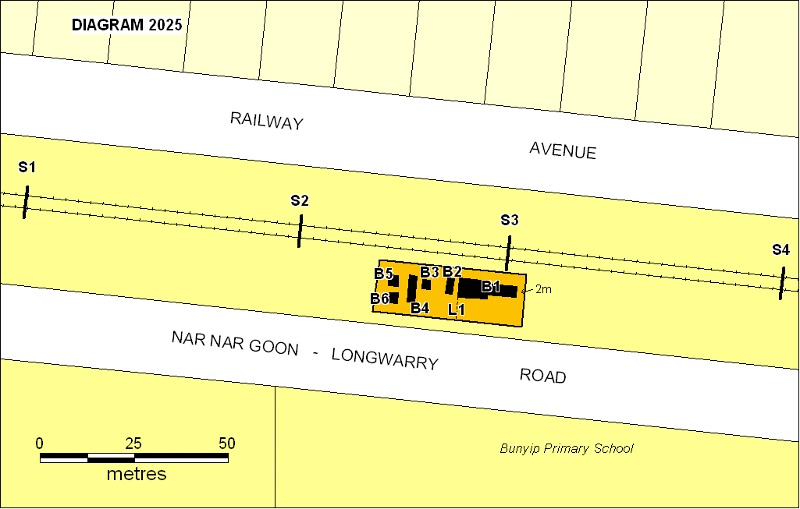
Statement of Significance
What is significant?
The Bunyip Sub Station was one of 19 sub and tie stations constructed between 1952 and 1954 from Nar Nar Goon to Traralgon for the electrification of the main Gippsland line, the first main line in Australia to be electrified. The single rectifier unit sub station - comprising a simple red brick building of utilitarian design on a concrete foundation and slab with cement sheet roofing includes the adjacent switch yard for the rectifier, circuit breaker, transformer and feeder equipment designed to the specification of the Chief Electrical Engineer of the Railway Electrical Branch of the Victorian Railways. The sub station is divided by small walls housing the power generating rectifiers and transformers leading to an adjacent control room or annexe for the feeder panels and switch boards. As the Bunyip Railway Sub Station was unmanned, there was no requirement for office and staff facilities, though the annexe provided space for a desk, storage for the sub station plans and a small hand basin with running water.
How is it significant?
The Bunyip Railway Sub Station is historically, technically and socially significant to the State of Victoria.
Why is it significant?
The Bunyip Railway Sub Station is historically significant as it serves as an important reminder of the electrification of the first main line in Australia. The Bunyip Railway Sub Station is historically significant for its association with the rapid development of the Latrobe Valley and the related coal industry in the 1950s.
The Bunyip Railway Sub Station is technically significant as it serves as an important reminder of the electrification of the first main line in Australia and the system of electric locomotives associated with the transportation of briquettes and the industrial growth in the Latrobe Valley.
The Bunyip Railway Sub Station is socially significant as it represents an important tangible link with the transportation of brown coal and the associated coal and briquette industry located at Latrobe Valley which was central to the economy and economic development of the State of Victoria particularly in the 1950s. The production and transportation of brown coal deposits were of fundamental importance to the domestic heating needs of many Victorian house-holds.
-
-
BUNYIP RAILWAY SUB STATION - History
Source:
The Electrific Railways of Victoria: A Brief History of the Electrified Railway System Operated by the Victorian Railways 1919 to 1979, S.E. DORNAN & R.G. HENDERSON, 1979, Syndey.Gippsland Line (pp. 88-92)
The name Gippsland refers to the region of the state located to the east and south-east of Melbourne. The railway to the district was built by the Government and opened for traffic in a number of unconnected sections, which in chronological order were:
Morwell to Sale 1 June 1877
Oakleigh to Bunyip 8 October 1877
Moe to Morwell 1 December 1877
Bunyip to Moe 1 March 1878
Where gaps between the sections occurred, connections were made in the form of horse drawn coaches. The last gap to be filled was in the suburban area between South Yarra and Oakleigh. Once this section was opened on 2 April 1879, trains could proceed through from Melbourne to Gippsland.
A branch line was constructed from Hernes Oak to Yallourn and opened on 11 January 1922 to transport brown coal from the mining operations at Yallourn to Melbourne.
Prior to World War II, these mining operations had been used to produce electric power on the coalfield itself and for the local manufacture of briquettes (a heating medium). However, when the supply of black coal from New South Wales became erratic after the war, the Victorian Government encouraged the State Electricity Commission (S.E.C.) to prepare long range plans for development of the coal reserves in the Yallourn area. The plans drawn up provided for greatly increased briquette out put as well as additional power generation.
The increase in briquette production meant that more trains to carry this commodity would be needed to run from Yallourn to the principal market in Melbourne. It was expected that the 1.7 million tonnes from two briquette factories would require 30 additional trains daily above the seven exisiting services. At this stage in the planning process, the V.R. was called in to consider how this extra traffic could be dealt with, and from then on the Railways co-operated closely with the S.E.C. in planning development of the area.
An internal body named the Operation Improvement Committee was set up within the V.R. to consider the problems involved, which included the fact that the entire line beyond Dandenong was single track and that adverse grades existed of up to 1 in 50 for Up trains, on which assistant engines were then required. The Committee considered various types of motive power - steam, diesal and electric - and noted that steam was inefficient and unsuitable from nearly all points of view. Diesals would have been more suitable but they too were discounted for various reasons including their dependence on a fuel still then being imported in large quantities and whose supply could have been sut off suddenly in the event of war.
The Committee's recommendation was therefore that electrical traction should be adopted as the most economical means of operation. A further recommendation was that eventually most of the line from Dandenong to Traralgon should be duplicated, with the most difficult section, the 28.7 km from Yarragon to Longwarry, to be dealt with first. Included in the excercise was to be the upgrading of the track from 40 to 53 kg/m rail. It was estimated that 17 electric locomotives would be needed, as compared with 24 diesels.
Some thought was given to electrifying the Gippsland line at 3,000 volts d.c. instead of the 1,500 volts pressure on which the suburban system operated. However, this notion was rejected when extra complication in locomotive design was considered and the restrictions it would have placed on the ability to run suburban multiple unit trains beyond Dandenong. An additional difficulty in using 3,000 volts would have been the increased rail potentional, beyond the limits considered safe for yard shunting movements, if the full theoretical advantage in sub-station spacing for the higher voltage was to be availed of.
In approving the Gippsland line upgrading, the Government of the day stressed the necessity of an early completion date for the entire project so that the benefits of working the line electrically could be realised as quickly as possible. Because of this, the V.R. sought and recieved greater than normal freedom of action in regard to the purchase of the necessary plant and materials.
By June 1949, the Annual Report could state that a good deal of engineering work had been done for the Gippsland electrification, although much work still remained. The determining factors as to the time of inaugurating electric services were considered to be the delivery of electric locomotives and rectifier equipment for sub-stations. In order to exediate the work, steps were taken to order a proportion of the components for earlier delivery than was generally available locally, so that a basis could be provided for training Railway staff in the erection of structures and conductors.
As a result of projected increases in brown coal production proposals were brought forward for duplicating the entire route from Dandenong to Morwell (a distance of 113.3 km) and regarding it where necessary, rather than carrying out these improvements only between Longwarry and Yarragon, as had been originally envisgaed. The expanded scheme did not vary the limit of electrification, which remained at Traralgon, some 157 km from Melbourne.
Besides electrfying and generally upgrading the existing Gippsland line, the V.R. constructed sidings and other facilities at Moe, Yallourn and Morwell for the greatly increased traffic. These projects were hampered by labour and material shortages but the programme kept pace with the requirements of the S.E.C.
Design of the overhead structures on the Gippsland line was kept simple and differed from the heavy lattice type in the suburban area by being constructed of "I" beams. A standard spacing of 73 m exists between structures, whose construction allows them to pivot on their bases transversely to the track. Anchor structures, suitably guyed, are located at each tensionlength, about 975 m apart, depending on local conditions.
The overhead generally consists of 171 sq. mm contact wire supported by droppers from a 161 sq mm catenary, both of copper, although steel catenary eas erected in station yards and over sidings to reduce costs. Heavier 242 sq. mm side feeders and catenaryof similar section were installed on the steep grades between Moe and Hernes Oak where additional power loading was necessary as the topography prevented the most suitable siting of sub-stations.
Sub-stations were built as East Dandenong, Narre Warren, Officer, East Pakenham, Tynong, Bunyip, Longwarry, Drouin, Warragul, Yarragon, Trafalgar, Moe, Yallourn, Hernes Oak, Morwell and Traralgon. With the exception of the sections Longwarry-Drouin-Warragul and Moe-Hernes Oak, all remaining sections are divided by tie stations. The sub-stations are all unattented, and were originally supervised from a central control room at Warragul where an overhead and sub-station maintenance depot and store are also located, all in the heart of the railway housing area. Subsequently, supervision of the sub-stations was transferred to Jolimont.
The siting of the sub-station at Moe was determined by its being the junction for the Yallourn line, while those at Hernes Oak and Morwell was well as that at Moe, feed the steep 1 in 50 sections where double heading occurs from time to time.
While electrification works were preceeding, other engineering activities were taking shape, including the construction of additional sidings at Yallourn and Morwell, to comply with the S.E.C.'e requirements, and a new marshalling yard at Yallourn to expediate the movement of brown coal.
A significant work undertaken at this time was the building between Moe and Yallourn of a 9.7 km long direct line which was brought into service on 6 September 1953. Work by the V.R. Construction Branch began on this line in 1949 but was delayed initially by insufficient supplies of manpower and materials and later by restricted funds. Designed as an integral part of the expansion and modernisation of traffic facilities to cope with the growth of raw brown coal and briquette traffic from the S.E.C.'s Yallourn North open cut and Yallourn briquette factory, the new line reduced the haul of loaded trains from Yallourn by about five kilometres and, with its maximum grade of 1 in 110, eliminated the steep 1 in 50 grades (requiring the use of an assistant engine) through the Haunted Hills via Hernes Oak and the main line.
The old route was retained for the time being for the working of Down empty trains to Yallourn so that a circular one-way traffic route was created through the new marshalling yard there, located adjacent to the briquette factory. The yard was arranged for gravitational working of loaded trucks from the briquette factory loading points. The original route to Yallourn from Hernes Oak fell into disuse after a new signal box was opned at the Yallourn marshalling yard on 1 December 1953 which allowed the new line to be worked in both directions. Closure of the old route took place on 31 March 1957when the S.E.C. was planning to extend its open-cut mining operations southwards across the route of the line.
The S.E.C. accepted responsibility for constructing a new railway station and goods shed at Yallourn and these were available for use at the same time as the opening of the spur line from Moe. The station featured suitable office accommodation for both railway and S.E.C. personnel.
Although the contruction schedule for the Gippsland electrification was continually upset during the early 1950's by the Government's inability to make sufficient funds available for capital works, the project was sufficiently complete for the first section to be officially opened as far as Warragul on 21 July 1954. On that day, this west Gippsland town gave a rousing welcome to the first electrically hauled train to cover 98.6 km from Melbourne.
The trip marked the opening of the first non-suburban electrified rail service in Australia and completion of the initial stage of the first main line electrification project to be undertaken by an Australian railway. The official train was hauled by L1150, the front of which was suitably decorated with national flags and a headboard inscribed "First Electric PassengerTrain between Melbourne and Warragul".
The train consisted of eight air-conditioned cars andcarried the Premier, Ministerof Transport, other State Ministers and Members of Parliament, the Railway Commissioners and heads of Departmental branches and over 200 representative citizens, who were guests of the Railway Commissioners. Travel time from Melbourne to Warragul was 90 minutes and on its arrival at Warragul station, which had been appropriately decorated, the train was welcome by three thousand local citizens led by the Shire President.
Commencing on 22 July 1954, amended services were introduced on the line for both passenger and freight trains, providing for the entire traffic between Melbourne and Warragul to be electrically hauled. From the same date an extra passenger service was provided departing Warragul early in the morning and returning from Melbourne in the mid-afternoon.
At the time of electrification to Warragul, duplication works had been completed on 33.7 km of the line, having been opened on 20 August 1950 from Drouin to Warragul, on 22 June 1952 from Longwarry to Drouin, on 5 October 1952 from Warragul to Yarragon, and on 28 June 1953 from Nar-Nar-Goon to Tyong. A small length at Drouin station remained as single track until 29 July 1958. The overhead structures along the whole line were originally built to accommodate double track where possible but, in locations which made this difficult, temporary wooden poles were installed to support the overhead pending dupliction works and the erection of permanent structures.
An unsuual feature of the duplication between Longwarry and Yarragon is the section bewteen Drouin and Warragul, where the Up and Down tracks are sited on different levels. The original main line with grades as steep as 1 in 50 becamethe Down line while a new Up track was built alongside but with grades no more severe than 1 in 110. Beacuse of the variation in grades between the two tracks at some points one track is on an embankmentwhile the other is in a cutting. This produces an interesting feature when road traffic crossing from one side of the tracks to the other must traverse one track on the level but the other by means of an overbridge.
To prevent brown coal and other freight trains from delaying electric trains in the suburban area between Dandenong and Melbourne, sidings were provided at Springvale and Dandenong to allow freight trains to be refuged while suburban trains pass on the main line.
In conjunction with the Gippsland electrification, although geographically remote from it, electrification of the short section of track between Spotswood and Newport Power House was completed and opened on 13 September 1954, so that trains with brown coal could be electrically hauled from Warragul through to Newport Power House sidings without change of motive power. Another minor extension of electrification made in order to expediate the movement of coal trains in Melbourne's western suburbs was a one kilometre length of line between what is now know as Altona Junction (on the Melbourne-Geelong line) and the S.E.C.'s sidings at Paisley. These tracks run parallel to the main Geelong line.
At the commencement of electric train services to Warragul, the Bairnsdale Express (a day return service from and to Melbourne) was renamed "The Gippslander".
Gippsland electrification works continued and on 19 September 1955, some 14 months after the inauguration of electric services to Warragul, electric traction was extended to Moe and also to Yallourn, the later being along the new line opened two years earlier. Six months later again, on 15 March 1965, the electrification between Moe and Traralgon was opened, thus completing the Gippsland electrification project.
Duplication works continued after electrification, with another 61.1 km being treated as follows:
Pakenham to Nar-Nar-Goon 10 October 1954
Officer to Pakenham 27 Februry 1955
Berwick to Officer 13 March 1956
Tyong to Bunyip 19 August 1956
Dandenong to Narre Warren 18 November 1956
Yarragon to Trafalgar 23 March 1958
Trafalgar to Moe 27 June 1960
Narre Warren to Berwick 25 February 1962
Thus the whole route between Dandenong and Moe was duplicated with the exception of the 4.3 km section between Bunyip and Longwarry, which remains single due to the relatively expensive earthworks that would be necessary and to the need to widen the bridge over the Bunyip River. The toal length of dupliucated line represents about three-quarters of the 127 route kilometres between Dandenong and Traralgon.
Automatic signalling was introduced simultaneously with duplication on all sections of the route with the exception of the initial duplication bewteen Longwarry and Yarragon (28.7 km) which retains manual signalling.
Expansion of the open-cut mine was responsilble for a deviation of the main line between Moe and Morwell, brought into use on 4 August 1963. Nearly three years were to elapse before this single-track section was provided with automatic signalling on 3 July 1966. Associated with this work was the construction of a remotely-controlled crossing loop in the section, this loop taking the name Hernes Oak.
Despite the extension of the Yallourn open-cut, a reduced volume of brown coal being transported to Melbourne led to the signal box at Yallourn, together with its interlocking and signals, being abolished from 21 May 1968. The status of Yallourn was even further reduced in April 1974 when the traction sub-station was taken out of use due to the lack of rail traffic and on S.E.C. requirement for the land on which the sub-station stood.
Although the principal reason for electrification of the Gippsland line to Traralgon was to expediate the haulage of brown coal from the Latrobe Valley coalfields to Melbourne, this traffic has declined considerably due to brown coal becoming a less popular source of energy for industrial and domestic purposes. While coal traffic on the line has declined, passenger traffic has increased, particaularly on the 27.0 km section from Dandenong to Pakenham, where improved service by suburban electric multiple-unit trains permits residents to commute to the city with greater ease.
BUNYIP RAILWAY SUB STATION - Permit Exemptions
General Exemptions:General exemptions apply to all places and objects included in the Victorian Heritage Register (VHR). General exemptions have been designed to allow everyday activities, maintenance and changes to your property, which don’t harm its cultural heritage significance, to proceed without the need to obtain approvals under the Heritage Act 2017.Places of worship: In some circumstances, you can alter a place of worship to accommodate religious practices without a permit, but you must notify the Executive Director of Heritage Victoria before you start the works or activities at least 20 business days before the works or activities are to commence.Subdivision/consolidation: Permit exemptions exist for some subdivisions and consolidations. If the subdivision or consolidation is in accordance with a planning permit granted under Part 4 of the Planning and Environment Act 1987 and the application for the planning permit was referred to the Executive Director of Heritage Victoria as a determining referral authority, a permit is not required.Specific exemptions may also apply to your registered place or object. If applicable, these are listed below. Specific exemptions are tailored to the conservation and management needs of an individual registered place or object and set out works and activities that are exempt from the requirements of a permit. Specific exemptions prevail if they conflict with general exemptions. Find out more about heritage permit exemptions here.Specific Exemptions:General Conditions: 1. All exempted alterations are to be planned and carried out in a manner which prevents damage to the fabric of the registered place or object. General Conditions: 2. Should it become apparent during further inspection or the carrying out of works that original or previously hidden or inaccessible details of the place or object are revealed which relate to the significance of the place or object, then the exemption covering such works shall cease and the Executive Director shall be notified as soon as possible. Note: All archaeological places have the potential to contain significant sub-surface artefacts and other remains. In most cases it will be necessary to obtain approval from Heritage Victoria before the undertaking any works that have a significant sub-surface component. General Conditions: 3. If there is a conservation policy and plan approved by the Executive Director, all works shall be in accordance with it. Note: The existence of a Conservation Management Plan or a Heritage Action Plan endorsed by Heritage Victoria provides guidance for the management of the heritage values associated with the site. It may not be necessary to obtain a heritage permit for certain works specified in the management plan. General Conditions: 4. Nothing in this declaration prevents the Executive Director from amending or rescinding all or any of the permit exemptions. General Conditions: 5. Nothing in this declaration exempts owners or their agents from the responsibility to seek relevant planning or building permits from the responsible authorities where applicable. Rail Track: Repairs to and replacement of track, sleepers and ballast are permit exempt - including modifications to rails, sleepers and ballast. Signalling Equipment: Repairs, but not removal, to any electric or electronic signalling equipment along the track is permit exempt. Maintenance Work: To secure the structure in its present form, which includes ensuring the gantries are structurally sound and do not pose a safety risk provided that the selection of replacement fabric and other materials is undertaken in consultation with Heritage Victoria. Emergency Work: Any emergency work occasioned by collapse, flooding or collision is permit exempt provided the work reinstates to the pre incident condition.BUNYIP RAILWAY SUB STATION - Permit Exemption Policy
The purpose of the permit exemptions is to allow works that do not impact on the heritage significance of the place to occur without the need for a permit. The Bunyip Sub Station and adjacent switch yard with the rectifier, circuit breaker, transformer and feeder equipment demonstrate the electrification of the main Gippsland line. These features contribute in a fundamental way to an understanding of the historical, technological and cultural significance of the site. These features are predominantly intact in building and fabric and are particularly demonstrative of the design and function of the site. It is important that any proposed changes or alterations to the features identified in the Extent of Registration are considered and assessed on the basis of clearly defined plans or proposals and must be planned and carried out in a manner which prevents damage to the fabric of the registered place or object. Maintenance to the buildings and related structures including gantries, track works and signal repairs is able to be undertaken without a permit. Any decontamination activities or works to make the gantries structurally sound to ensure that they do not pose a safety risk are permit exempt provided the selection of replacement fabric and materials are underatken in consultation with Heritage Victoria.
-
-
-
-
-
BUNYIP POST OFFICE
 Cardinia Shire
Cardinia Shire -
RAILWAY HOTEL (FORMER)
 Cardinia Shire
Cardinia Shire -
BAKEHOUSE, FORMER DRAPER'S SHOP
 Cardinia Shire
Cardinia Shire
-
"AQUA PROFONDA" SIGN, FITZROY POOL
 Victorian Heritage Register H1687
Victorian Heritage Register H1687 -
'Aqua Profonda' sign wall sign, Fitzroy Swimming Pool
 Yarra City H1687
Yarra City H1687 -
1 Campbell Street
 Yarra City
Yarra City
-
-












